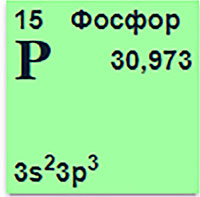Influence of calibration solutions on the results of available phosphorus measurement in soils
DOI:
https://doi.org/10.31251/pos.v5i4.187Keywords:
Chernozem; available phosphorus; standard stock solution; working solution; calibration curve; photocolorimetric method; undisturbed soil; arable soil; abandoned arable soils; certified reference sampleAbstract
The aim of the study was to compare soil available phosphorus content as determined in a range of diverse soils using calibration solutions prepared with the extractant used for soil samples or distilled water.
Location and time of the study. Soil chemical analyses were performed in 2021 with 54 soil samples collected in 2018-2020 of the podsolised chernozem (Luvic Greyzemic Chernozem) and meadow-chernozemic podsolised soil (Luvic Greyzemic Chernozem Colluvic) in the Toguchin district of the Novosibirsk region, Russia, and leached chernozem (Luvic Chernozem) in the Iskitim district of the same region and Pavlovsky district in Altaisky krai, Russia. The samples were collected at undisturbed, arable and abandoned arable sites.
Methods. The method used to estimate available soil phosphorus content included extraction of phosphates by 0.5M acetic acid (1:25 soil:extractant ratio). Phosphate solutions (including both stock and working) for constructing the calibration curve were prepared either with the extractant or with the distilled water.
Results. The values of soil available phosphorus content were shown to depend on the composition of calibration solutions: when the extractant was used, the values were on average 1,1 times lower as compared with those obtained using the distilled water to construct the calibration curve. The difference was statistically significant (р<0,01) for undisturbed, arable or abandoned arable soils.
Conclusions. Solutions used to construct calibration curves for phosphates, including the stock and working ones, should be close in their chemical composition to the solutions used to extract phosphates from soil and hence should be prepared with the same solution as used for extracting phosphates from soil. At the same time a researcher should follow a specific protocol chosen for the analysis. Therefore, the peculiarities of soil chemical analyses should be carefully considered and compared, especially in the long-term surveys or meta-analysis of the spatially and temporally varying data. The use of reference soil standards, both internal and certified external, with known chemical composition, is indispensable for controlling the quality of chemical measurements. Preparation of internal laboratory standard soil samples in sufficient amounts and their routine use in analyses allows to decrease the number of analytical replicates and is a prerequisite for improving laboratory performance and making justified conclusions about soil fertility.
Downloads

Downloads
Published
How to Cite
Issue
Section
License
Copyright (c) 2022 The Journal of Soils and Environment

This work is licensed under a Creative Commons Attribution 4.0 International License.






